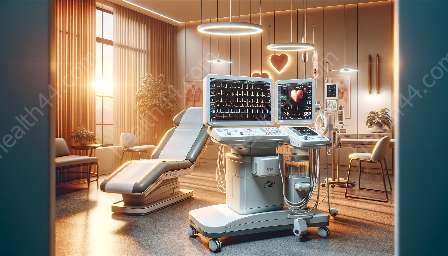As technological advancements improve the accuracy and capabilities of medical devices, the need for maintenance and calibration of ECG/EKG equipment becomes increasingly crucial. In this topic cluster, we will explore the significance of regular maintenance and calibration, their impact on accurate diagnoses, and the compatibility with medical devices and equipment.
The Importance of Maintenance for ECG/EKG Equipment
ECG/EKG equipment is an essential tool in the medical field for diagnosing cardiac conditions and monitoring heart activities. However, like any other machine, regular maintenance is required to ensure its optimal performance. Maintenance includes cleaning, inspection, and performance testing to identify and resolve any issues that could affect the accuracy of the readings.
Proactive maintenance not only extends the lifespan of the equipment but also enhances its reliability and accuracy, ultimately contributing to better patient care and treatment outcomes.
The Role of Calibration in ECG/EKG Equipment
Calibration is the process of adjusting the ECG/EKG equipment to ensure that the recorded measurements are accurate and consistent. This process is essential to eliminate any deviations or inaccuracies in the readings, which could lead to misinterpretation of the patient's condition.
Regular calibration of ECG/EKG equipment involves verifying the accuracy of the measurements, making necessary adjustments, and ensuring that the equipment meets the required standards. Calibration not only improves the precision of the equipment but also provides confidence in the reliability of the recorded data.
Compatibility with Medical Devices and Equipment
ECG/EKG equipment is often integrated with other medical devices and equipment to provide comprehensive patient monitoring and diagnosis. Therefore, ensuring the compatibility of ECG/EKG machines with other medical devices is essential for seamless data exchange and accurate interpretation.
Regular maintenance and calibration of ECG/EKG equipment play a critical role in maintaining compatibility with other medical devices. By keeping the equipment in optimal condition, healthcare professionals can trust the accuracy and consistency of the data generated, leading to more informed decision-making and effective patient care.
Benefits of Proper Maintenance and Calibration
1. Accurate Diagnoses: Well-maintained and calibrated ECG/EKG equipment provides accurate and reliable measurements, enabling healthcare providers to make precise diagnoses and treatment decisions.
2. Enhanced Patient Care: By ensuring the accuracy of the equipment, maintenance and calibration contribute to the overall quality of patient care, promoting better health outcomes.
3. Long-Term Cost Savings: Regular maintenance and calibration help prevent major malfunctions and breakdowns, reducing the need for costly repairs or replacements.
4. Regulatory Compliance: Compliance with regulatory standards and guidelines is supported through consistent maintenance and calibration practices, ensuring patient safety and data integrity.
Conclusion
Maintenance and calibration of ECG/EKG equipment are integral processes in the healthcare industry, directly impacting the accuracy of diagnoses and the quality of patient care. By prioritizing these procedures and ensuring compatibility with other medical devices and equipment, healthcare providers can uphold the highest standards of accuracy and reliability, ultimately improving patient outcomes and safety.


